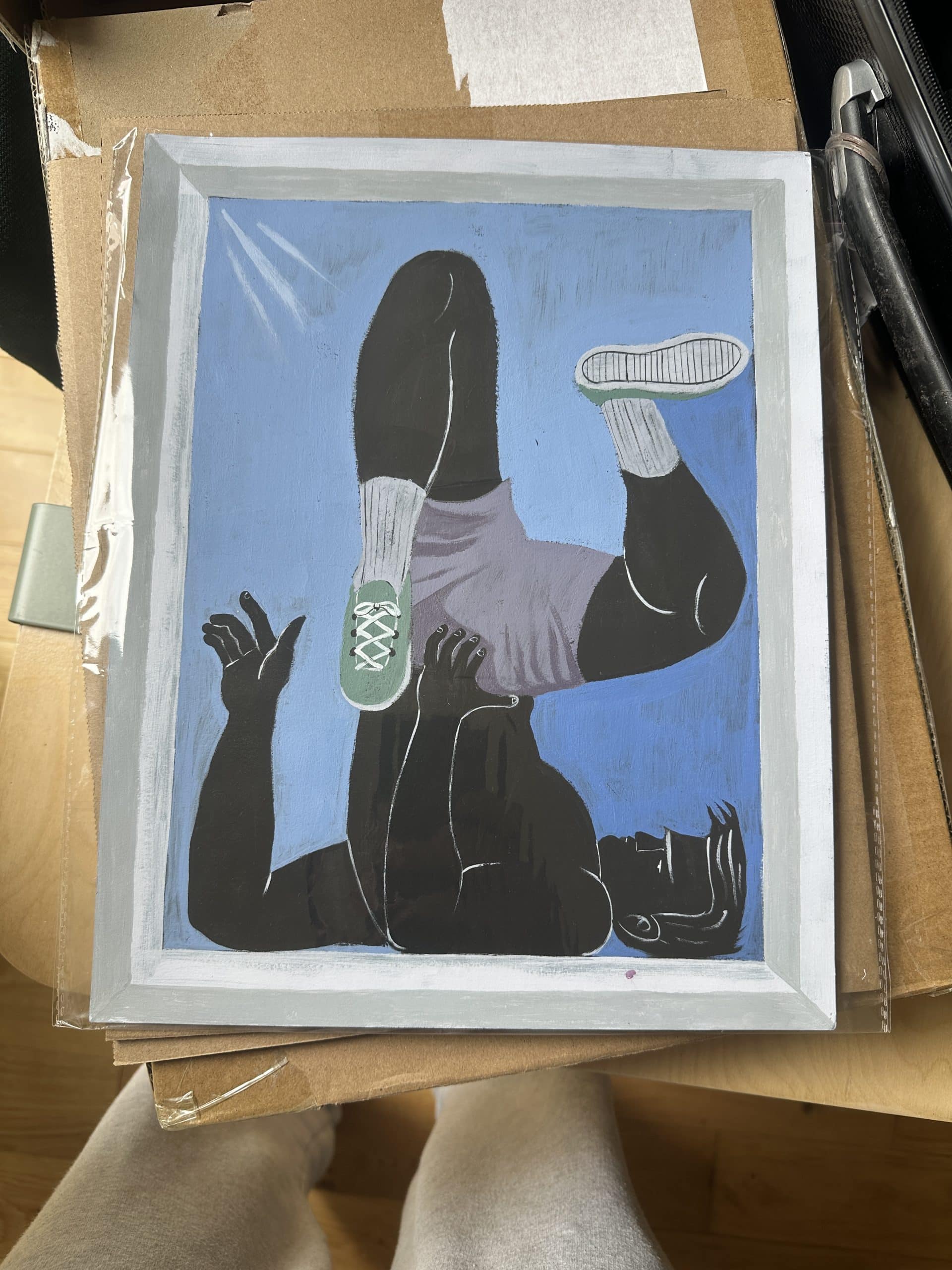A lost self-portrait by the acclaimed northern artist Norman Cornish has been discovered behind another of his works. The Guardian reports that the self portrait was discovered behind the work Bar Scene, after a museum conservator noticed an unusually shaped picture frame.
A magical discovery
Jon Old, the conservator at Bowes Museum in Barnard Castle, County Durham, made the discovery when he was curating a show featuring Cornish and another highly acclaimed northern artist, LS Lowry. He explained that he noticed the framed Bar Scene painting had an unusually shaped backboard set into the stretcher, so he decided to investigate further.
He removed the backboard to reveal the undated self-portrait, although it is believed to be from early in the artist’s career. It shows Cornish in his former occupation as a coal miner, with a striking but grimy face and clothing and tousled hair. He was born in 1919 in County Durham, and was one of the so-called ‘pitman painters.’
Old told The Guardian: “To my surprise it revealed this wonderful other painting on the reverse, which was quite magical.” He said he felt “very privileged to have been the first person since Norman Cornish to see this self-portrait”.
It is assumed that the painting ended up on the reverse side of the board because the artist was short of money to buy materials in his early career, and he reused an unsold canvas.
Working-class artists
Cornish was born into a mining family in County Durham and went down the pit at the age of 14, but he had a passion for art, drawing and painting scenes of local life in his spare time. He found inspiration at the local Spennymoor Settlement, where he was able to meet and learn from other artists and writers.
Cornish’s style is characterised by a raw authenticity, with muted colours and thick, expressive brush strokes. He painted empathetic scenes of everyday life, including miners at work, men in pubs, and domestic scenes. He eventually earned enough from his art to leave the mines and become a full-time painter.
Some of his paintings went beyond this everyday narrative, such as a scene depicting a crucified miner on a telephone pole, which is thought to express the artist’s resentment at the way ordinary working people such as miners were treated by society. He disliked the label ‘pitmen painters’, finding it demeaning and stereotyping.
Cornish’s work is widely recognised in the north east, with a dedicated gallery in his home town of Spennymoor, and a collection in Northumbria University Gallery.
L.S Lowry, Cornish’s contemporary
The new exhibition at Bowes museum will also feature works by the more well-known artist LS Lowry, who was Cornish’s contemporary and lived and worked as a rent collector in Salford, Greater Manchester. Both artists knew each other, and were celebrated for their authentic observations of life in industrial Britain.
Hannah Fox, executive director of the Bowes, said: “Cornish and Lowry capture life and its nuances in a way that everyone can understand and connect with.”
“Making art accessible is hugely important, and we hope that by displaying over 50 works showing all walks of life, different landscapes and celebrating the ordinary and the extraordinary, will not only capture the imagination of our visitors but also show how everyone can get involved with art and creativity.”
“Norman’s work should be seen as important as Lowry’s and should be more widely recognised. It is in the north east. Everybody knows Norman Cornish. So we want to make sure everyone else does.”
LS Lowry was from a more middle class family, and his father was a clerk. However, during his childhood financial difficulties meant the family moved from a leafy Manchester suburb to the more industrial area of Pendlebury. The trees were replaced by factory chimneys and textile mills, and at first young Lowry felt out of place.
However, he eventually found the industrial landscapes to be inspiring, and he went on to study at Manchester School of Art in 1905. He later moved to the Royal Technical Institute in Salford, and began to develop his trademark style of matchstick figures against light backgrounds.
The exhibition ‘Kith and Kinship: Norman Cornish and L.S. Lowry’ is at the Bowes Museum, Barnard Castle, County Durham, from 20 July-19 January 2025.
